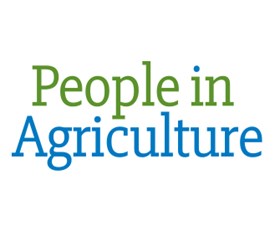Dairy recover on way, leading analyst
30/1/2017
Freshagenda director Steve Spencer was guest speaker at the RASV annual International Dairy Week Industry Leaders’ breakfast, in Tatura. “In the longer term, we are going to see a market which is firm in trend, we will see volatility, caused by some of those changes in weather,” Mr Spencer said.
Key Points of the presentation included:
- Europe was coping very poorly with volatility
- There were land and environmental constraints in New Zealand
- Australia’s milk production is going to be down seven to 10 per cent, over the season
- Water supply was excessive in the spring
- Weak margins have caused people to contract
- Farm gate milk price would end up between $5 and $5.40kg/ms
- Farm gate price of six dollars would not be seen, until next year.
Mr Spencer went on to say:
“You will see some companies achieve at the better end of that, just because of their product mix, and you’ll see some at the bottom end of that, because of performance issues and lower milk supply.”
"Our stock prices lag actual trades done by dairy companies – the spot market is actually three to four months ahead of actual business.”
Mr Spencer said Australia was still strongly linked to global trends and finely balanced.
“The global market still drives Australia’s milk value, we are still on that roller coaster weather drives global volatility, weather impacts milk supplies, and applies to most of the moves we see in market changes.”
“Despite the fact three quarters of our milk is used in dairy products, a large amount of that product stays on shore - we are now running to 70 per cent of milk staying on shore, yet we are so influenced by that world market, because we are an open market for cheese, and butter fat,” he said.
“That cheese market, from New Zealand and the US, plays a key role both in retail products, but especially in food service and industrial products, so our play is trying to sell domestically, into the cheese market here, which is very strongly influenced by world prices.”
“A one per cent change in EU milk supply, in the first half of the year, is a billion litres of milk, and impacts prices between $120 and $130 US dollars a tonne.
The impact of China and Russia pulling back in 2015 was something a bit of three billion litres, in one year.
“Because New Zealand is highly exposed, it doesn’t take much milk, a two per cent change in New Zealand, is only 200 million litres, but it could move powder prices by $200 a tonne, because of that export dependence, because of how much the world market watches what New Zealand is doing.”
Mr Spencer said one of the biggest challenges for Australian processors was value capture.
The growth in cheese sales was the “real good story,” with more than 40 per cent of milk going into that product category.
He told the breakfast the industry was facing a “cautious recovery."
“Long term demand is quite good, but it is still quite sensitive, and still quite conditional, there are more complexities out there, affecting the demand response form certain economies, and certainly consumer segments, it’s not there for the taking,” Mr Spencer said.
He said while the industry was still on a “theme park, roller coaster ride,” the world and dairy market had matured, with prices still rising between two and three per cent.
The world market was a complex landscape, with many variables, having an impact on growth and contraction.
See the original full article in Stock and Land





